2012-07-15
This is an illustration of a recipe based on one I found in An Invitation to Indian Cooking by Madhur Jaffrey. The technique is not exactly the same and neither are the amounts, but the underlying idea and the proportions are similar. I assure you that the result is delicious.
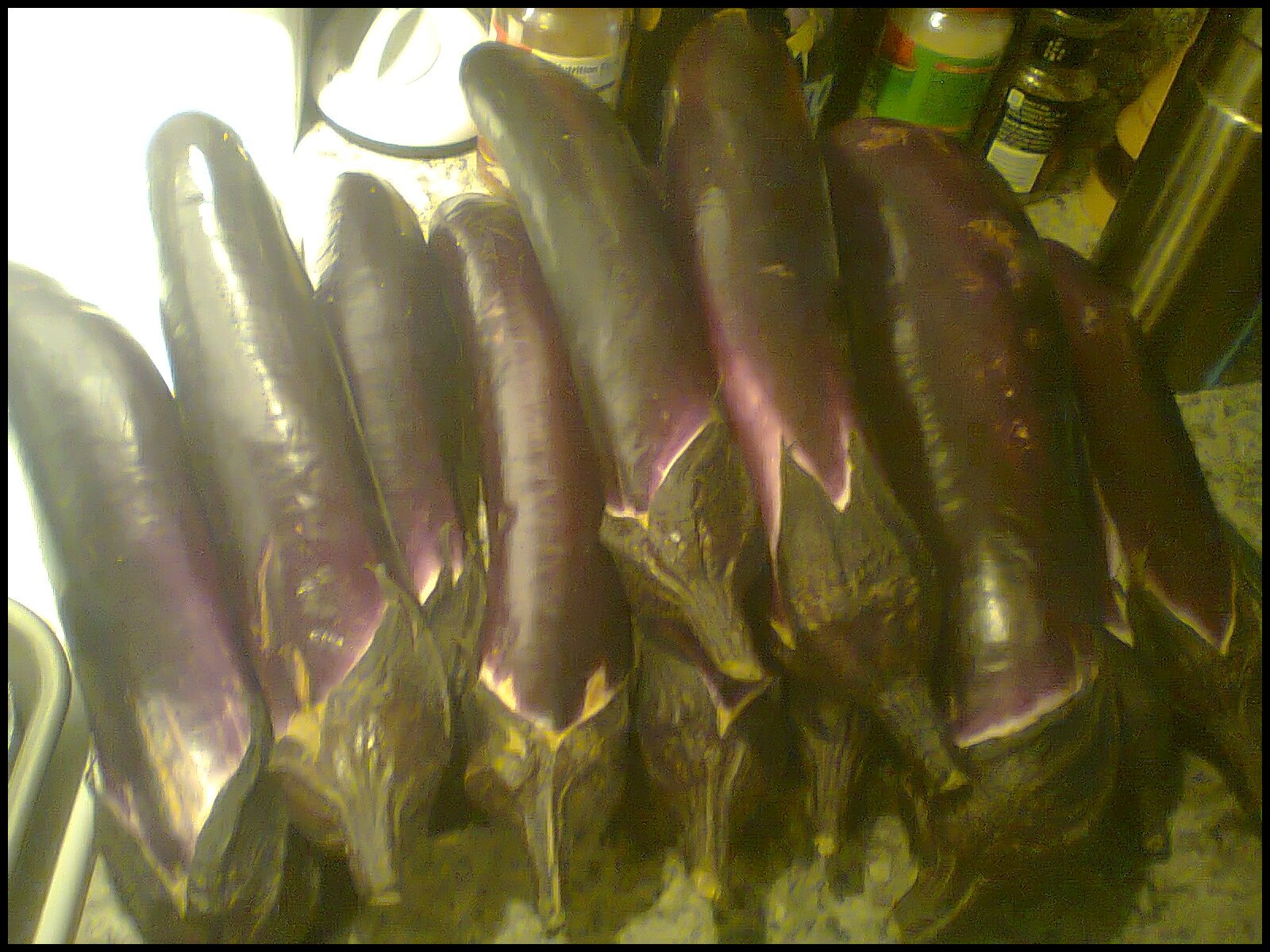
First, you want to get some eggplants. Here we have long Chinese eggplants, but you can use any kind you want. You might think this looks like a lot of eggplants, but trust me... it cooks down, like an imploding neutron star during a supernova. You too will want a lot of eggplants. I had 15.
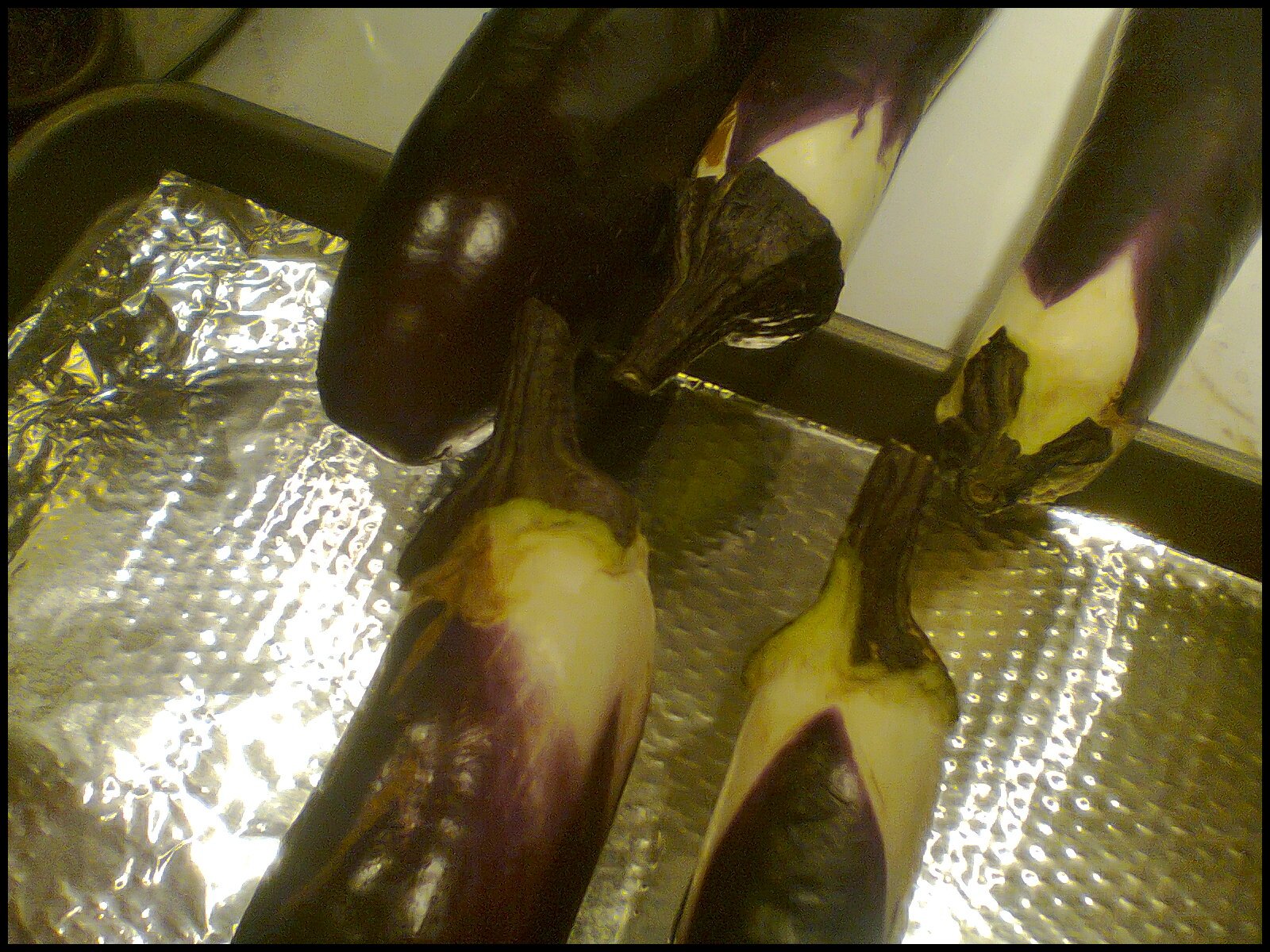
Rinse off the eggplants. Cut off the excess leafy parts of the stem, if any, and the stem ends. Keep the rest.
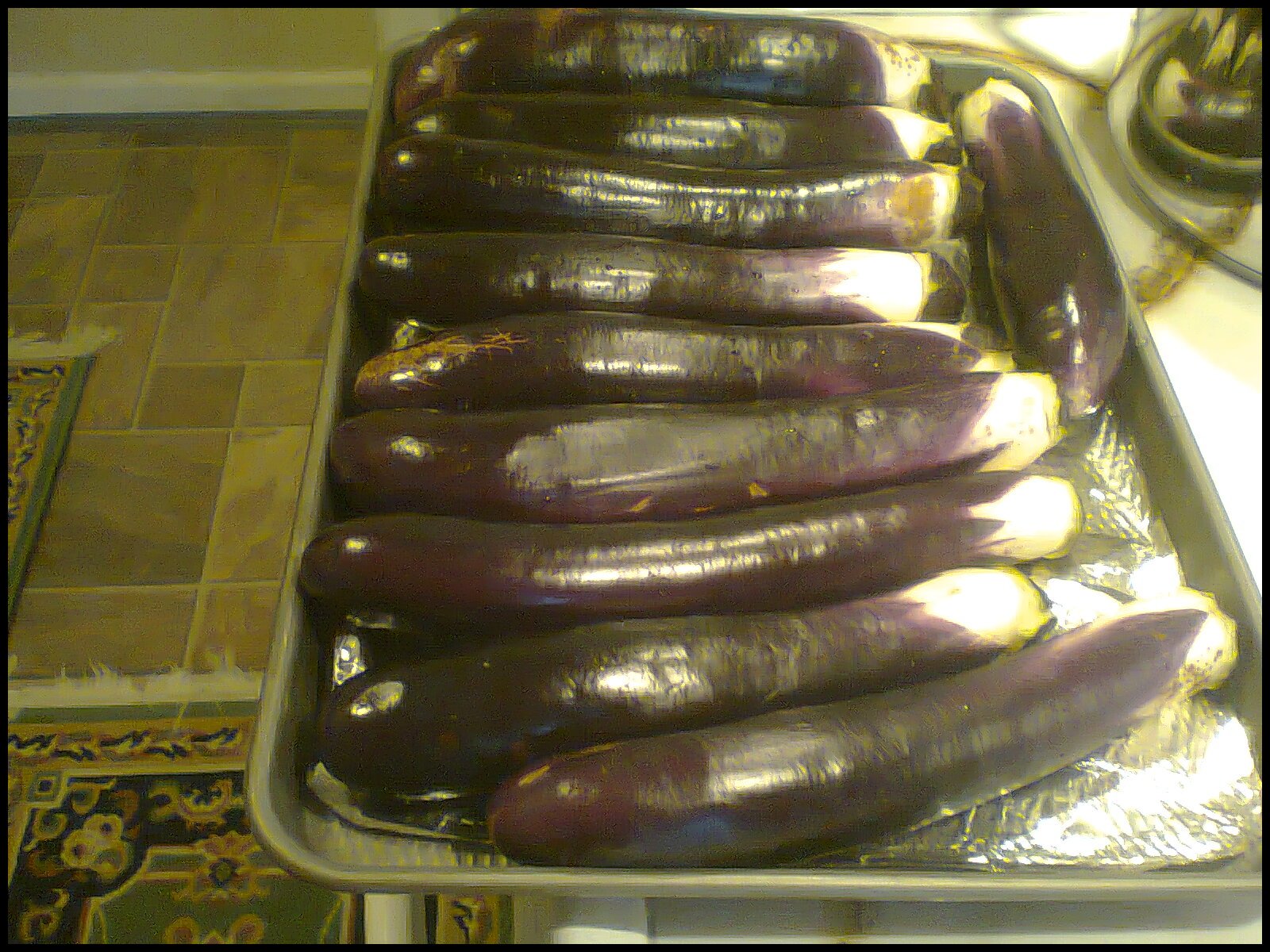
Arrange them on a tray of some sort in a way that the oven will heat them all thoroughly. Here I laid them out flat on a cookie sheet lined with foil. You will want some kind of lining because the eggplants tend to leak juice when you roast them, and at the temperatures we will be using, the juice quickly forms a dark brown sticky mess.

Cut up two onions. A rough chop is fine; these guys are destined for the blender.
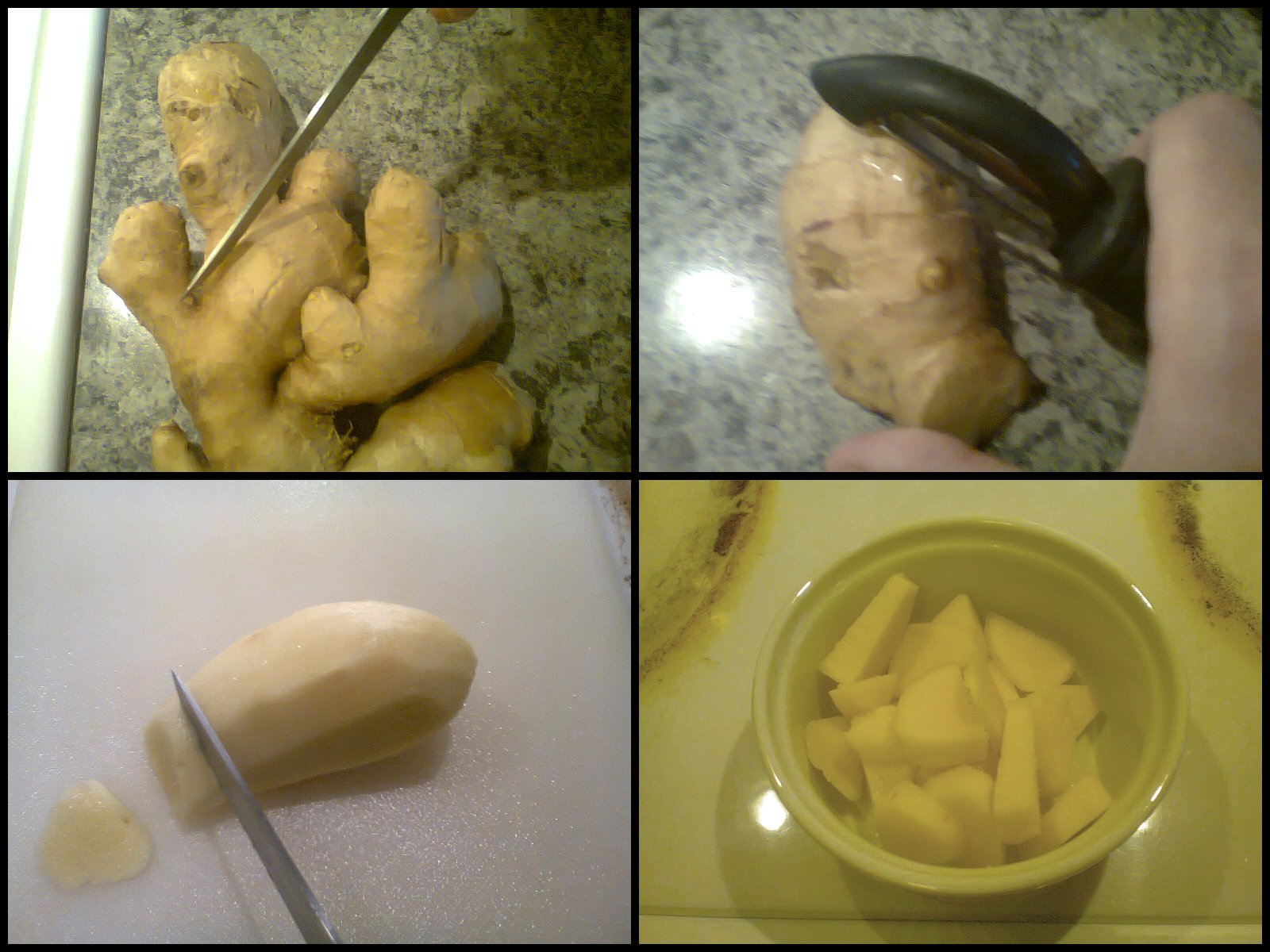
Break off a chunk of ginger root a couple of inches long. Peel and chop it roughly.
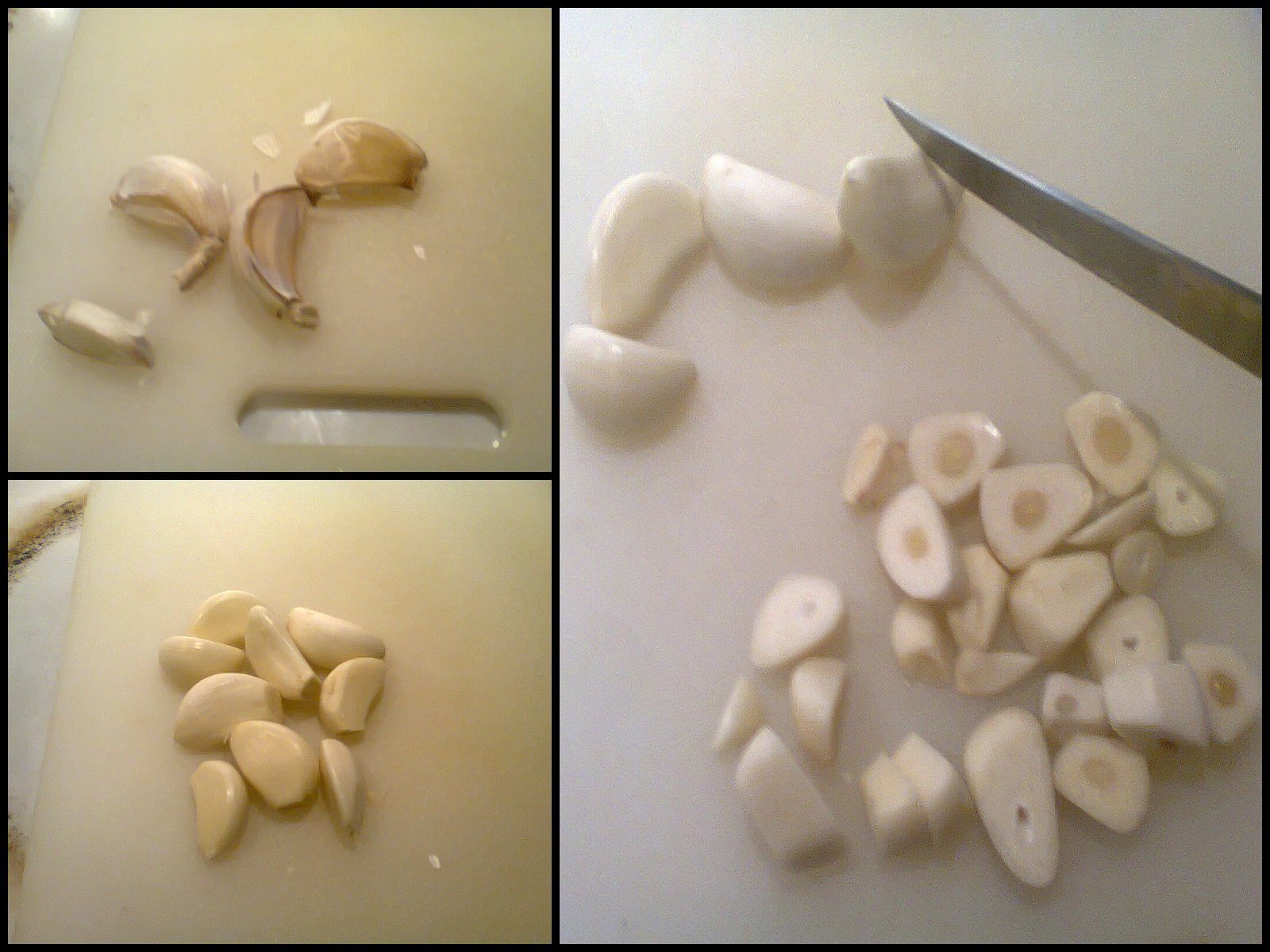
Peel several cloves of garlic. Chop them up too. As you might have guessed, like the onions, the garlic and ginger are going to get the blender treatment ... so no need to fuss.

Measure out a 1/3rd cup of vegetable oil.
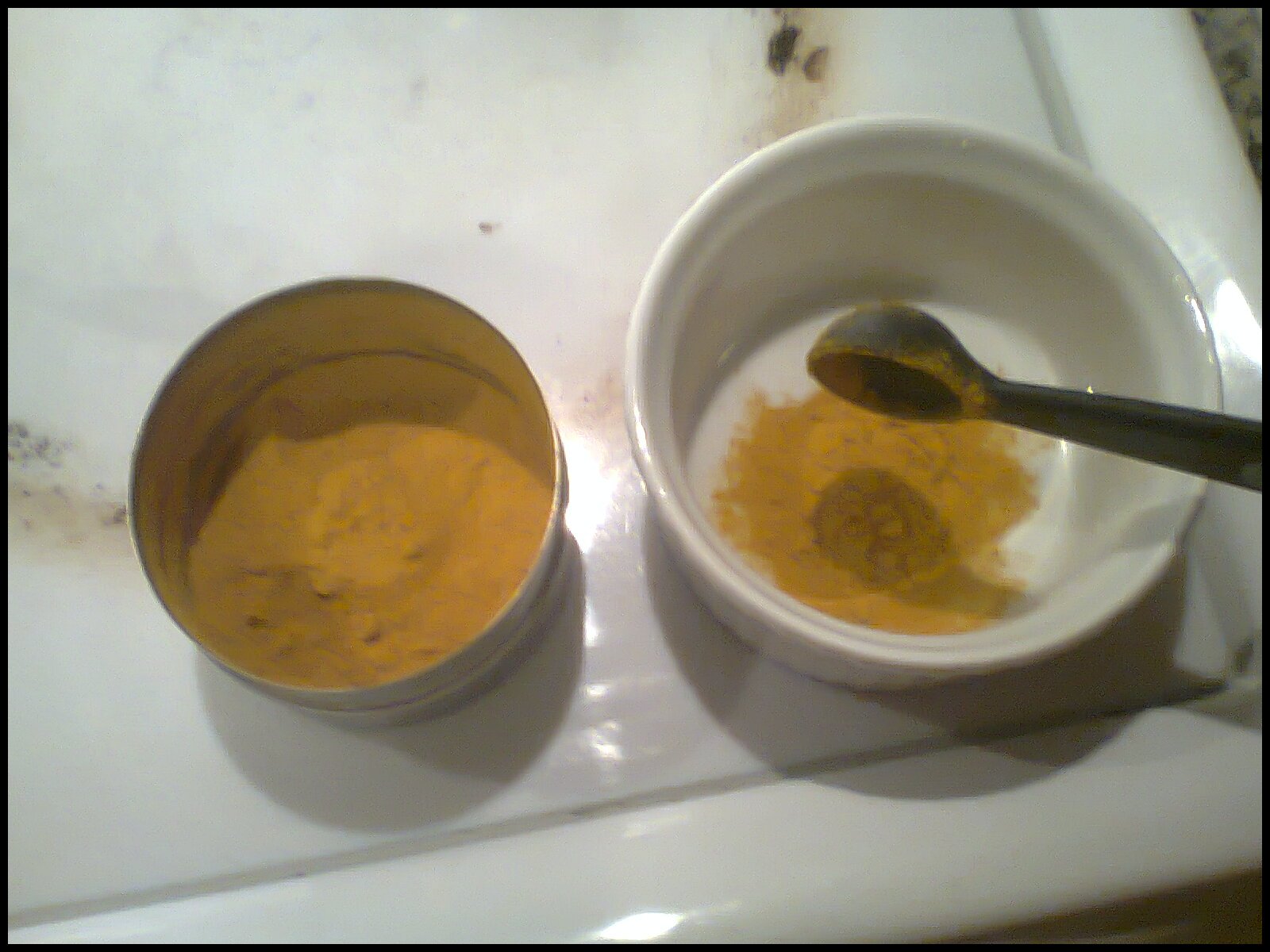
And a teaspoon of turmeric... because food should be yellow. Or something.
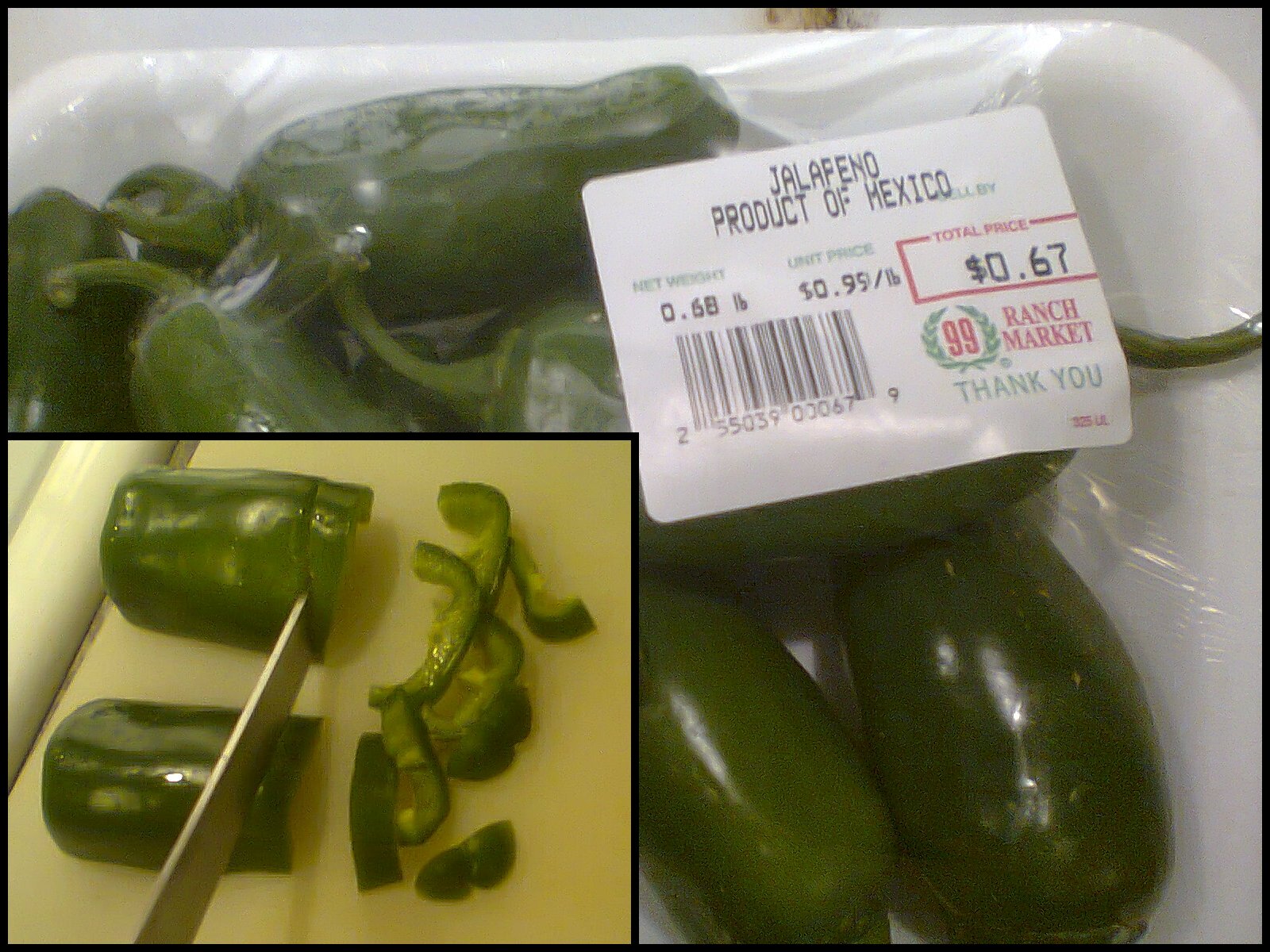
Wash and slice a green chile pepper. (I would just like to briefly draw your attention to the numbers in the red box. At $0.67 US for the package, that works out to about $0.06 per pepper. I love free trade.)
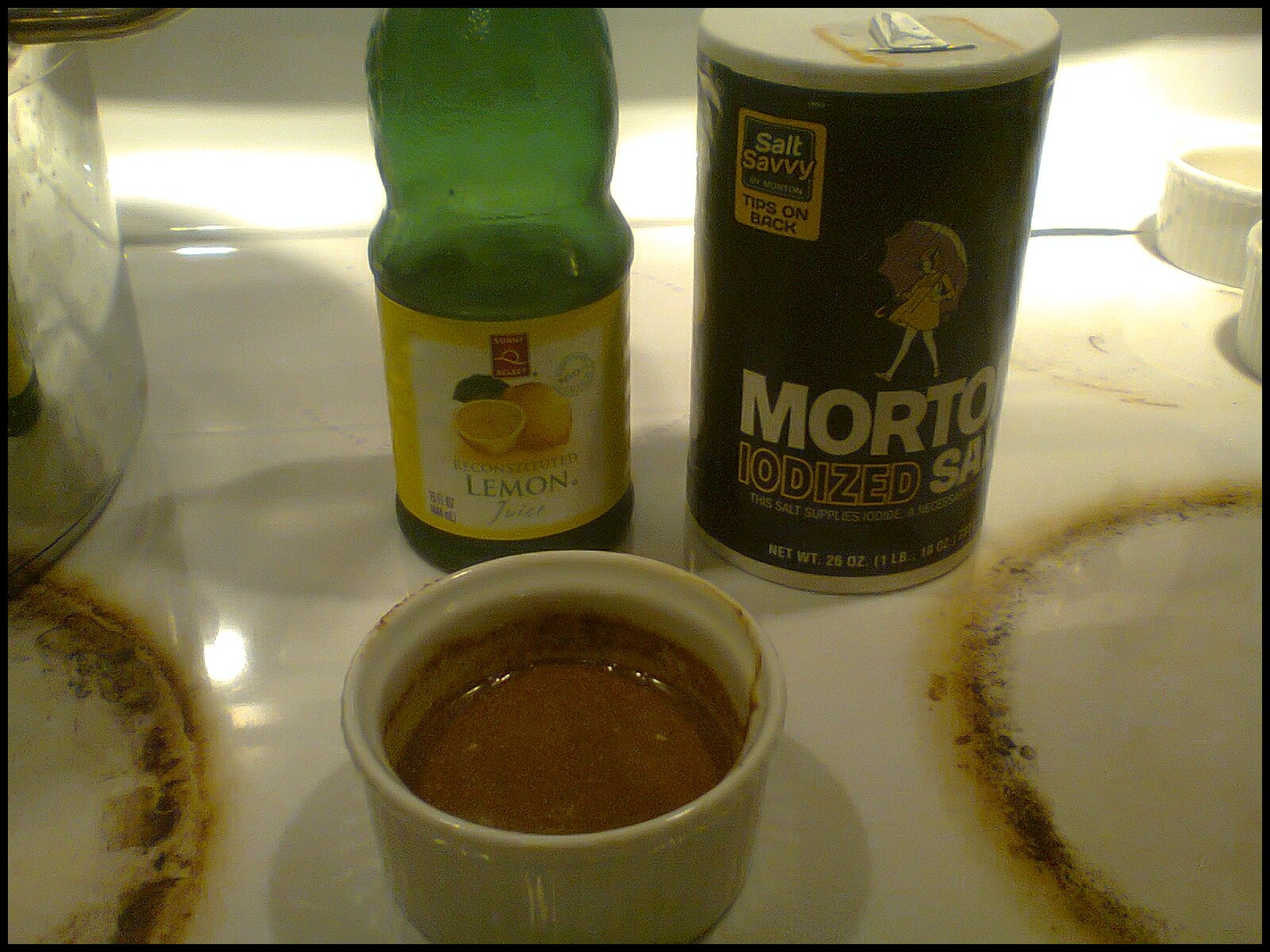
Mix up some salt, lemon juice, and garam masala powder. You will want at least a teaspoon of each, but probably more. Use your best judgment, based on the amount of eggplant you have.
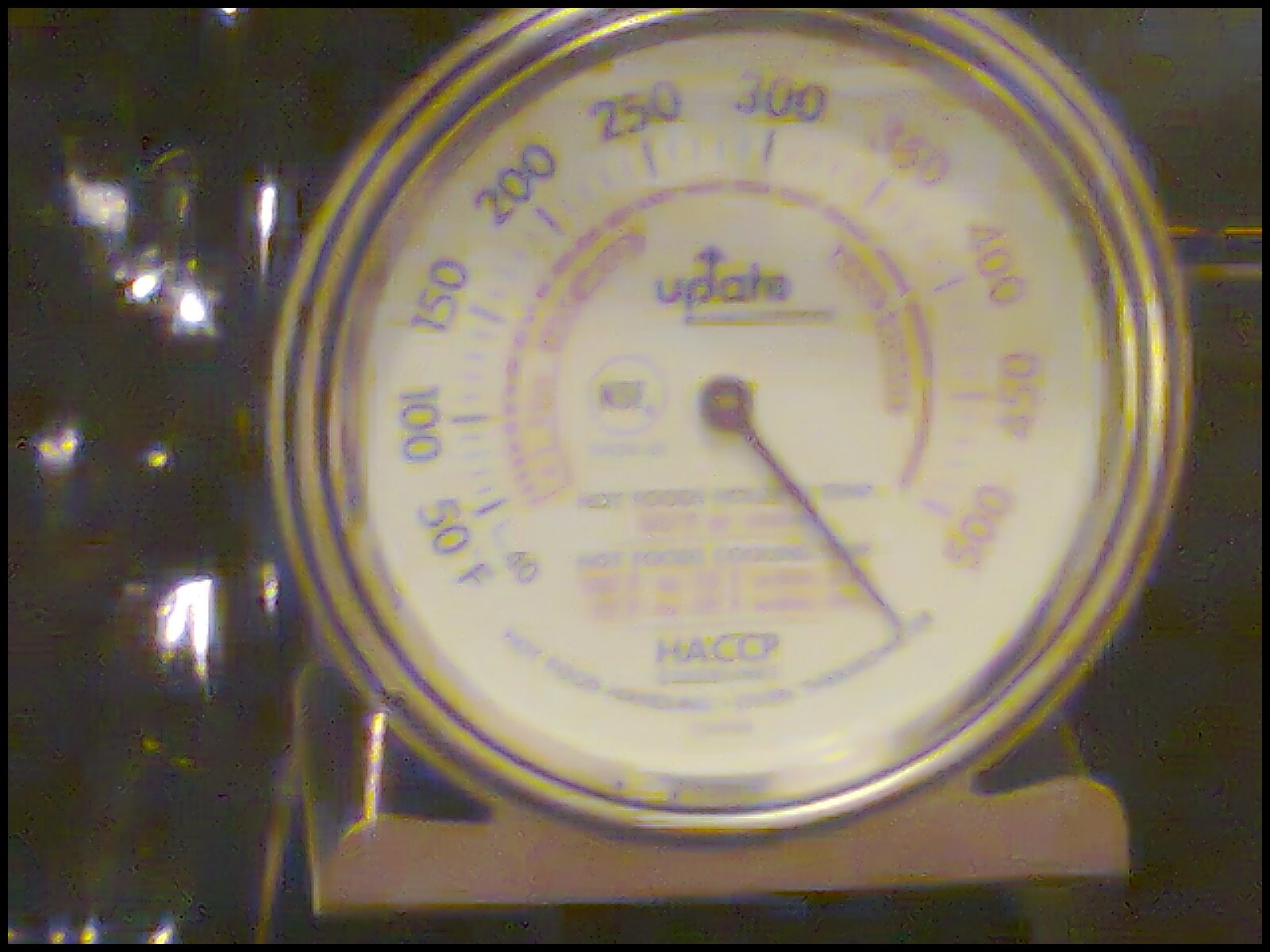
Set your oven to "broil". In my oven this results in an ambient temperature depicted here on my oven thermometer as "TILT". Put the eggplants in and wait.
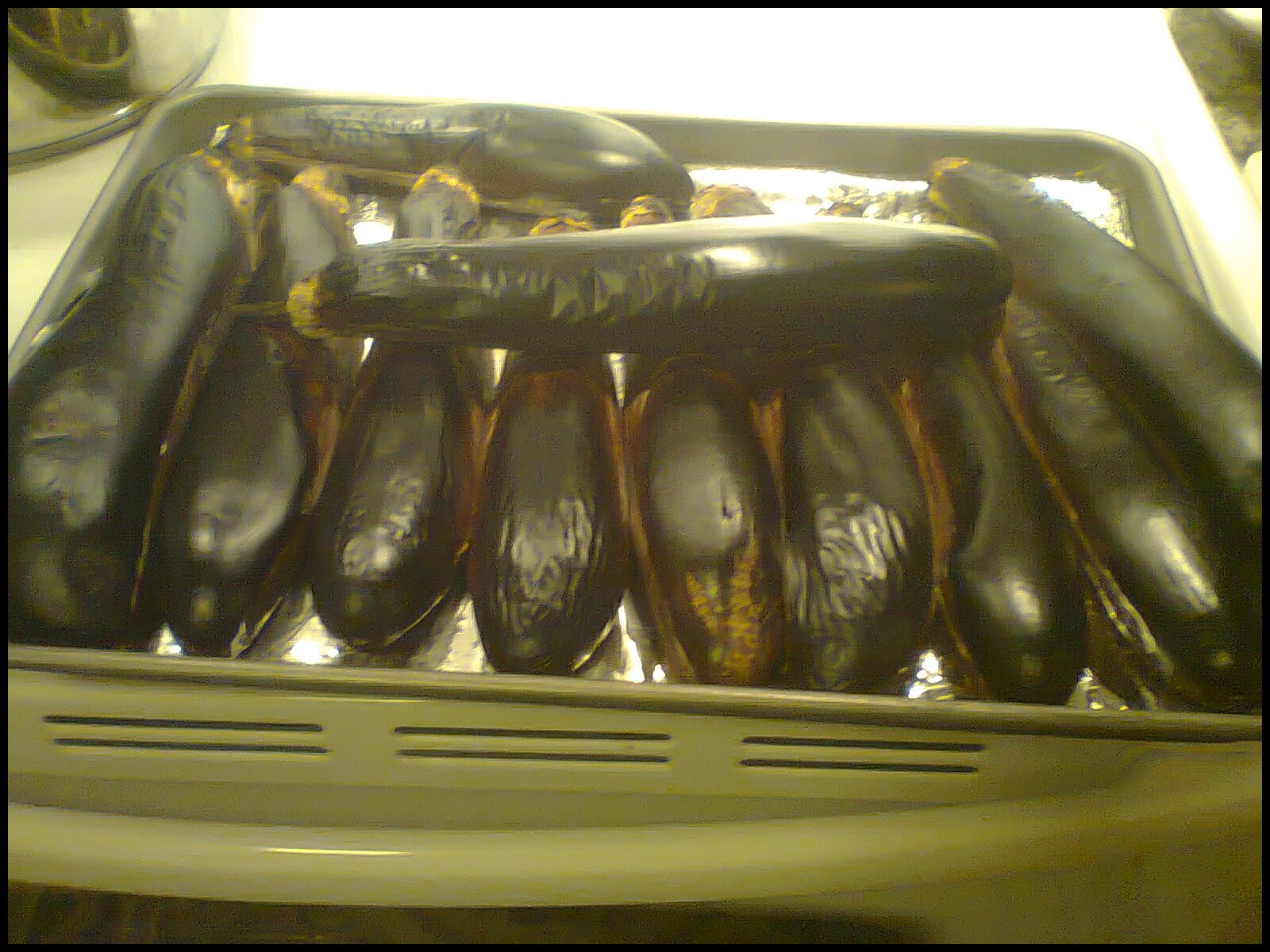
You want your eggplants to get good and black. The best thing to do is watch and wait. It will probably take at least 20 to 25 minutes, maybe more. Note that there are only 11 eggplants shown here. The ones on the other tray didn't get nearly as black as this, and in retrospect, I probably should have taken these guys out and waited for the rest to get black too. Moral: Patience.

Use a sharp knife to slice a slit lengthwise down the skin of the blackened eggplant. Open it up and scrape out the pulp -- which should have sharply reduced in volume compared to the original eggplant -- with a spoon.
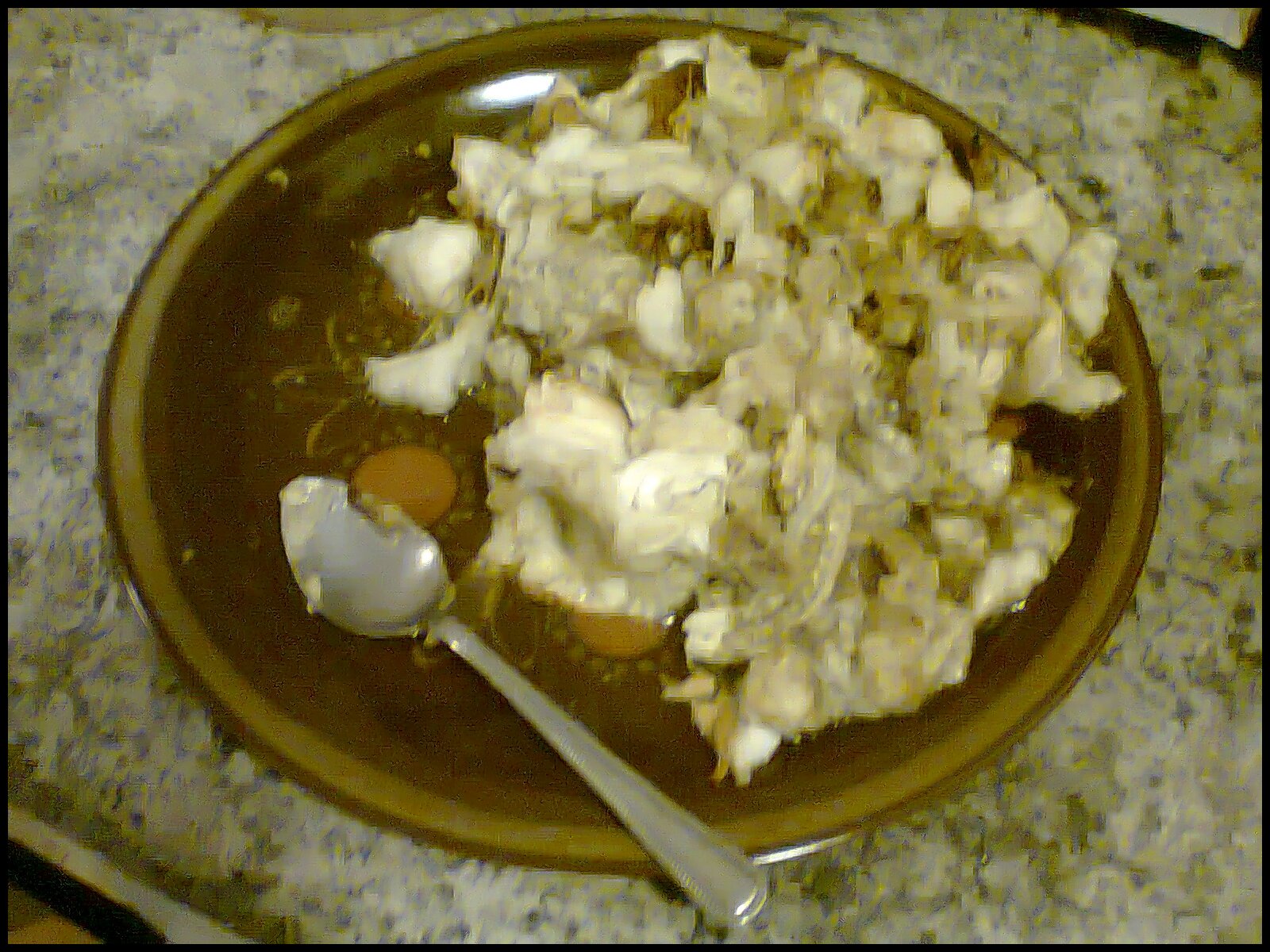
You will amass a large quantity of pulp. Collect the pulp in a plate or bowl or whatever is handy, and discard the blackened skins. (I will not think any less of you if you nibble on a browned bit of skin.) Do this for all your eggplant.
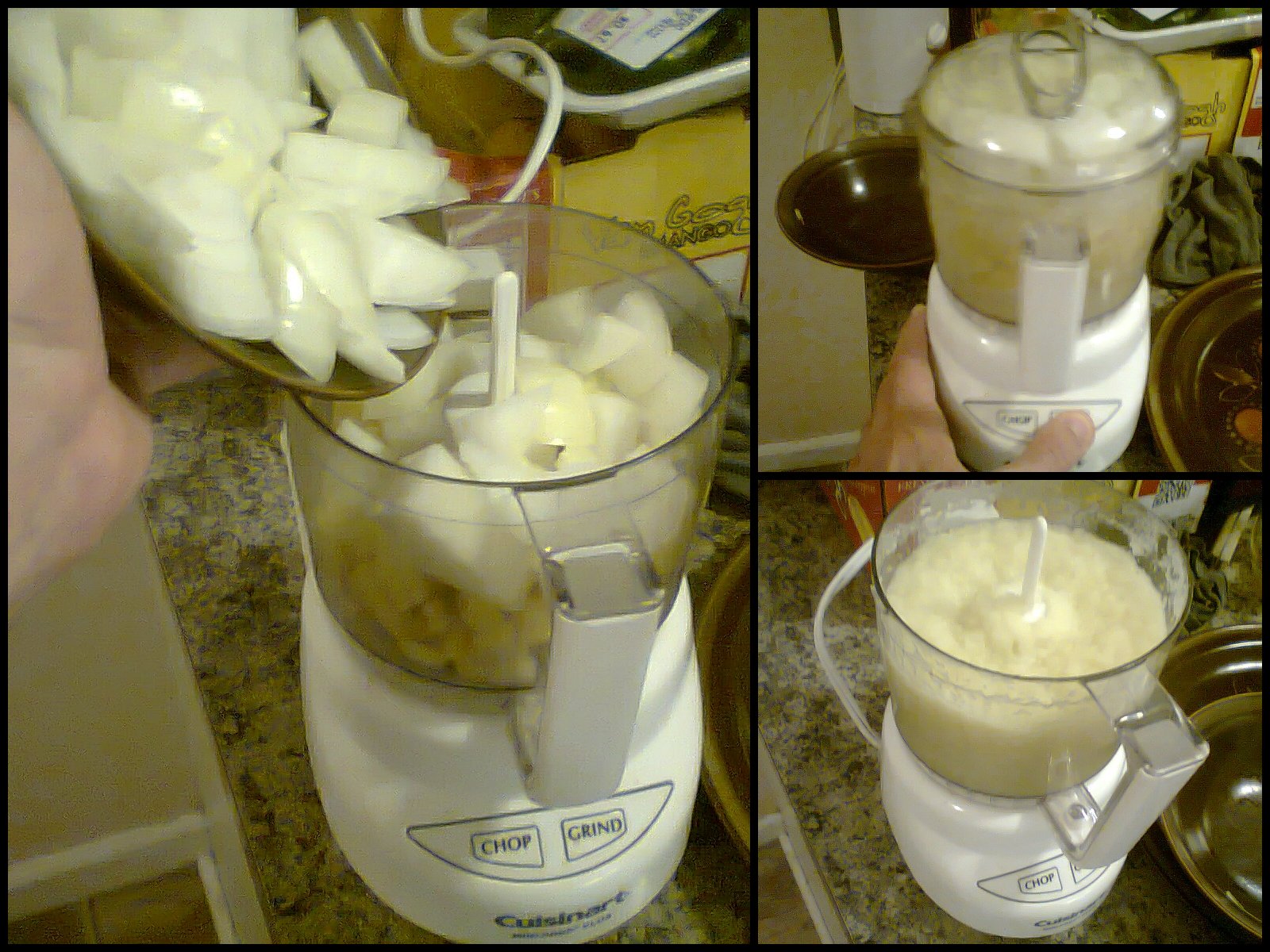
Blenderize your chopped onions, garlic and ginger into a paste.
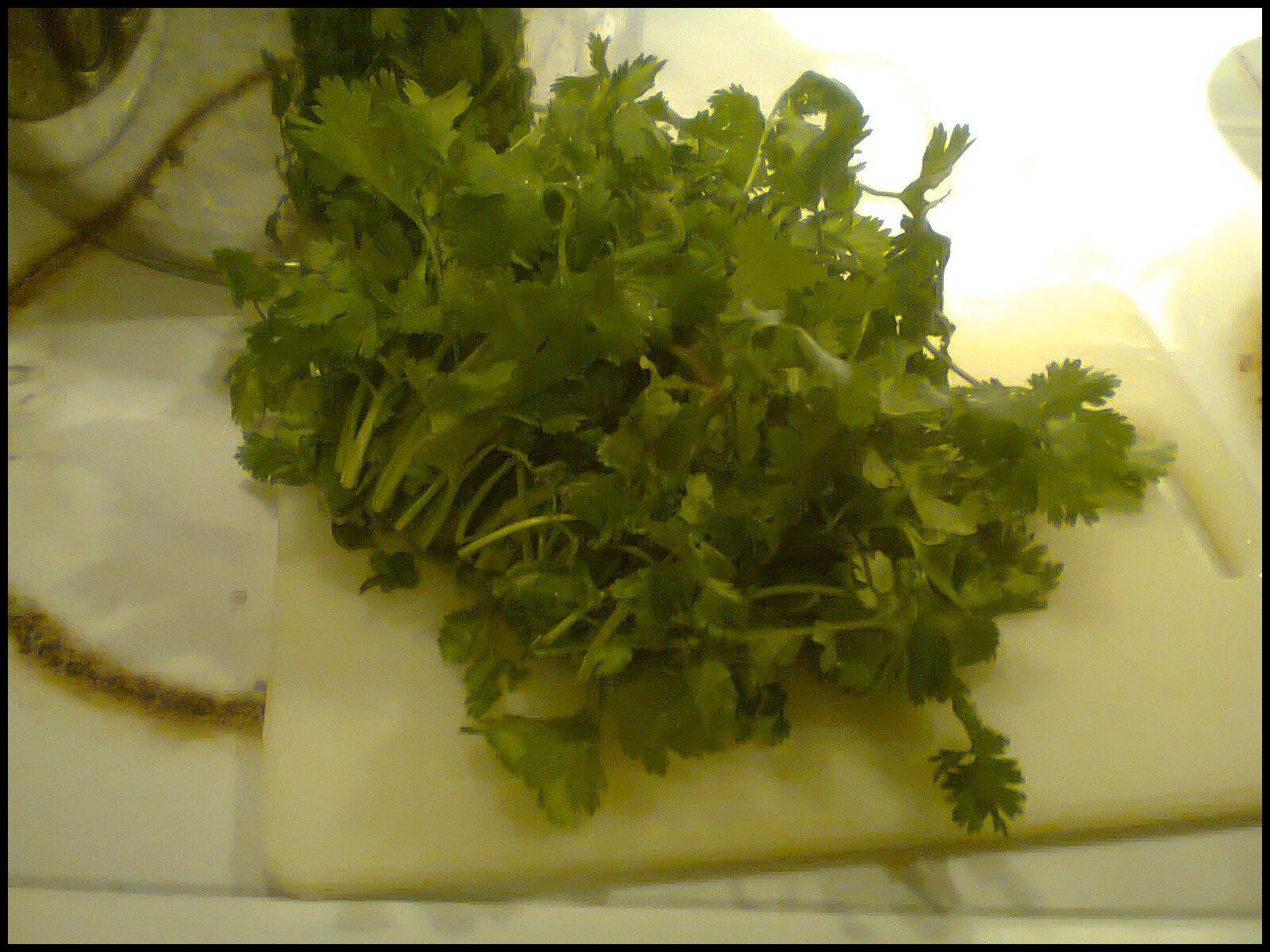
Wash a bunch of cilantro. Remove and discard the stem ends. Chop up the rest.
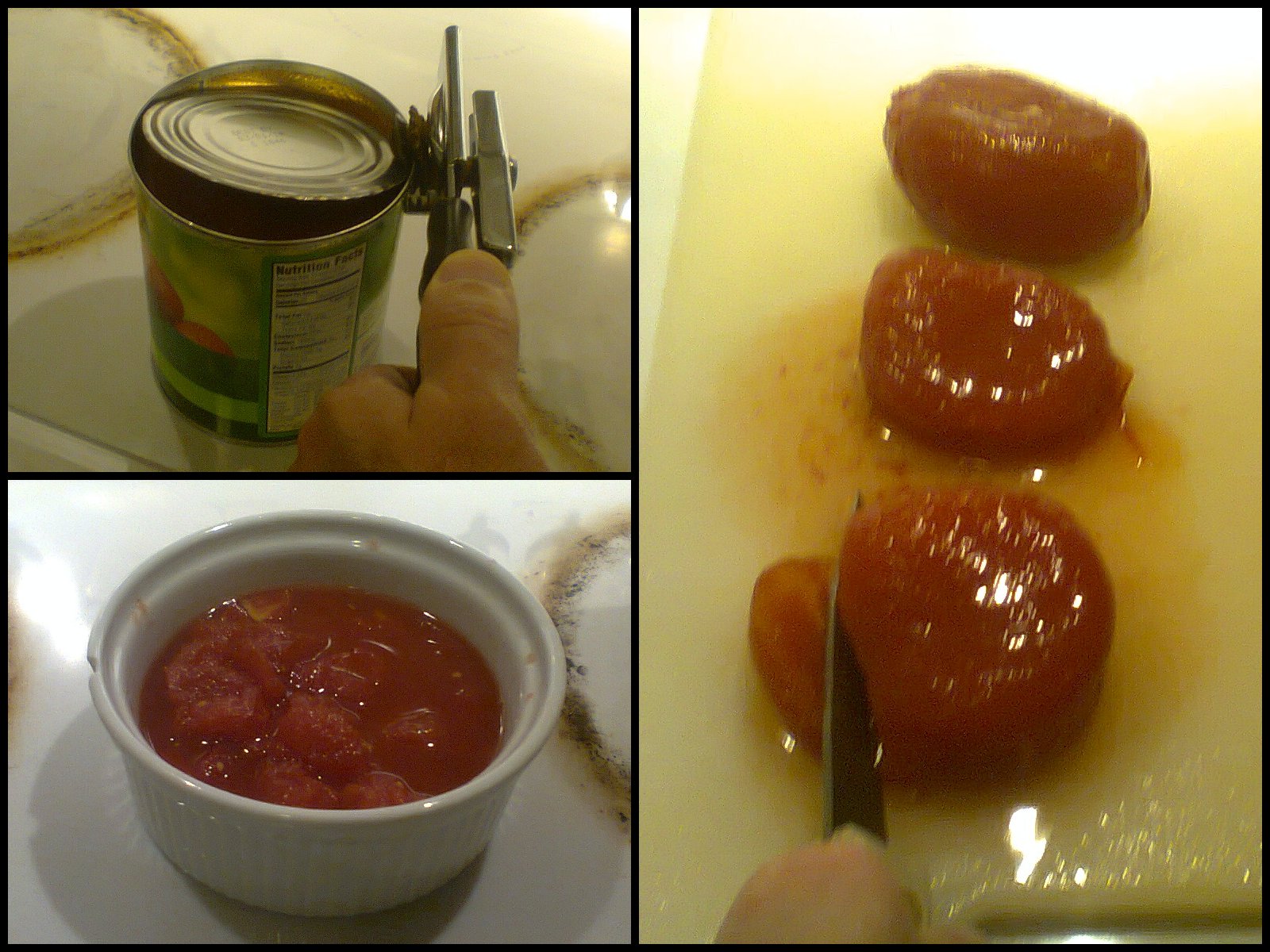
Chop up three canned tomatoes. I recommend getting a little bit of the juice they come in, too.
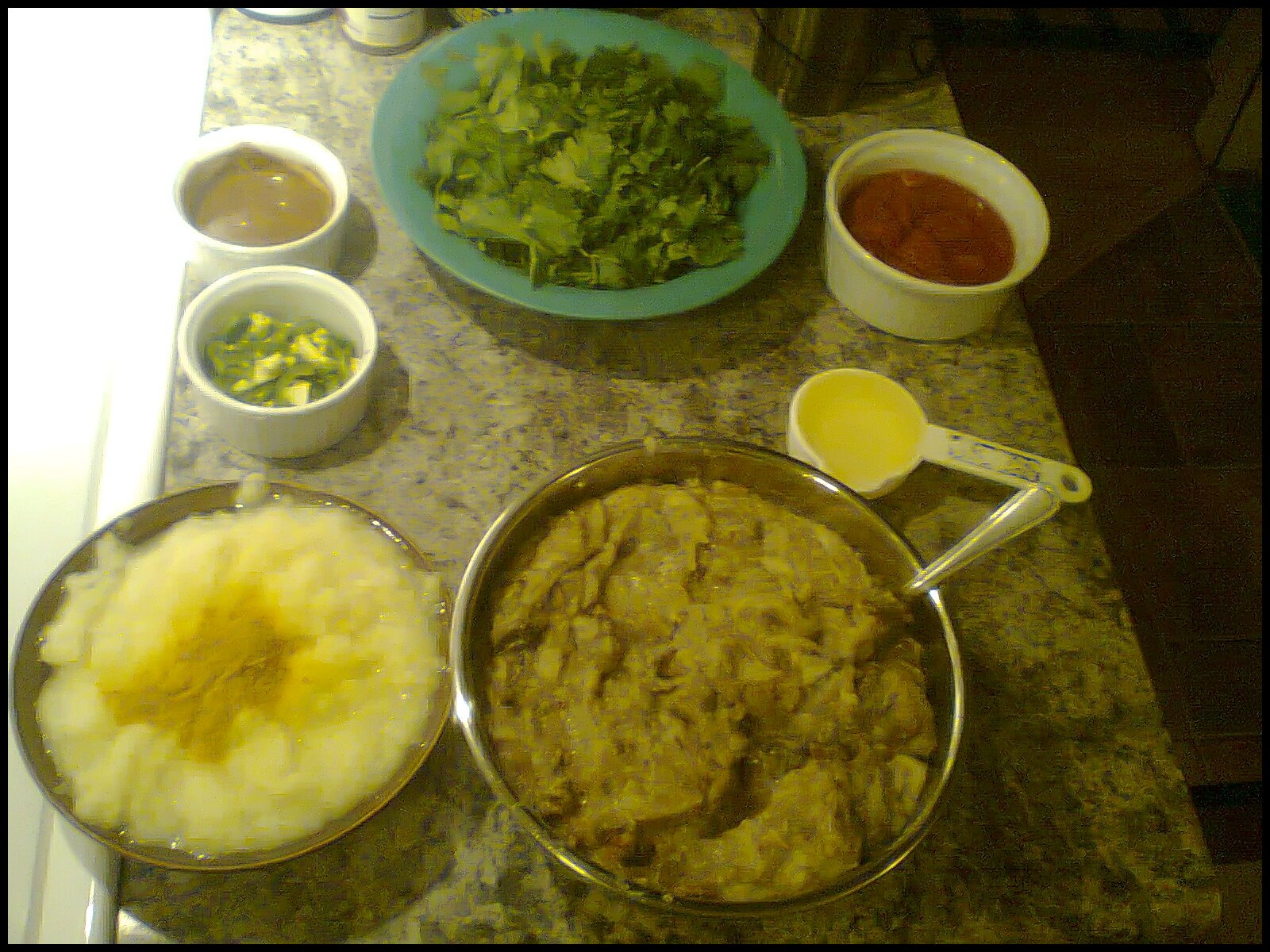
Here is shown a full "mise en place" for this dish. From top, clockwise: chopped cilantro; chopped canned tomatoes and their juice; vegetable oil; roasted eggplant pulp; blenderized paste of garlic, ginger and onion with turmeric; chopped green chile; and a mixture of salt, garam masala and lemon juice. Rejoice, for the hard part is over!
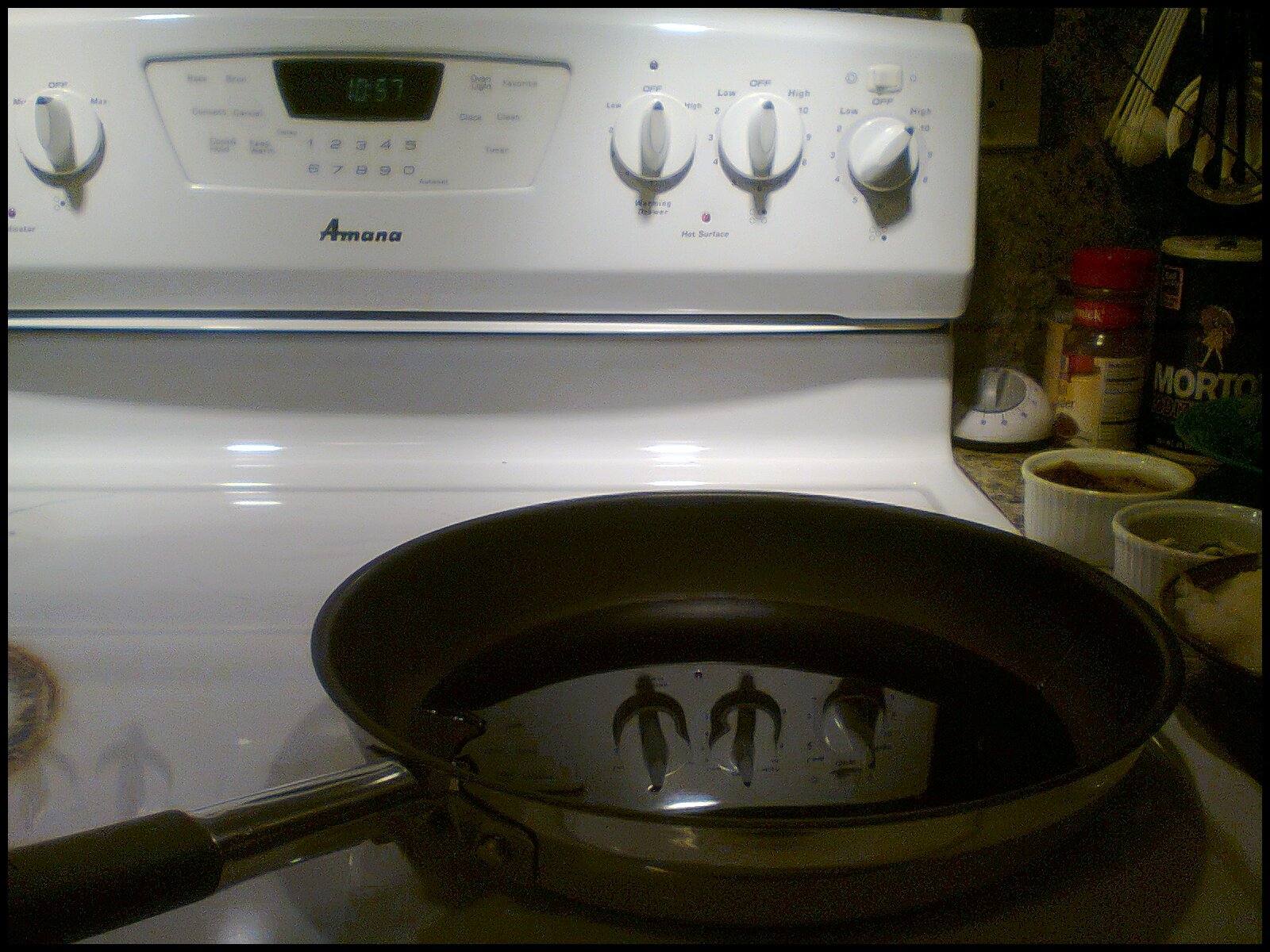
Heat oil in a skillet on high heat.
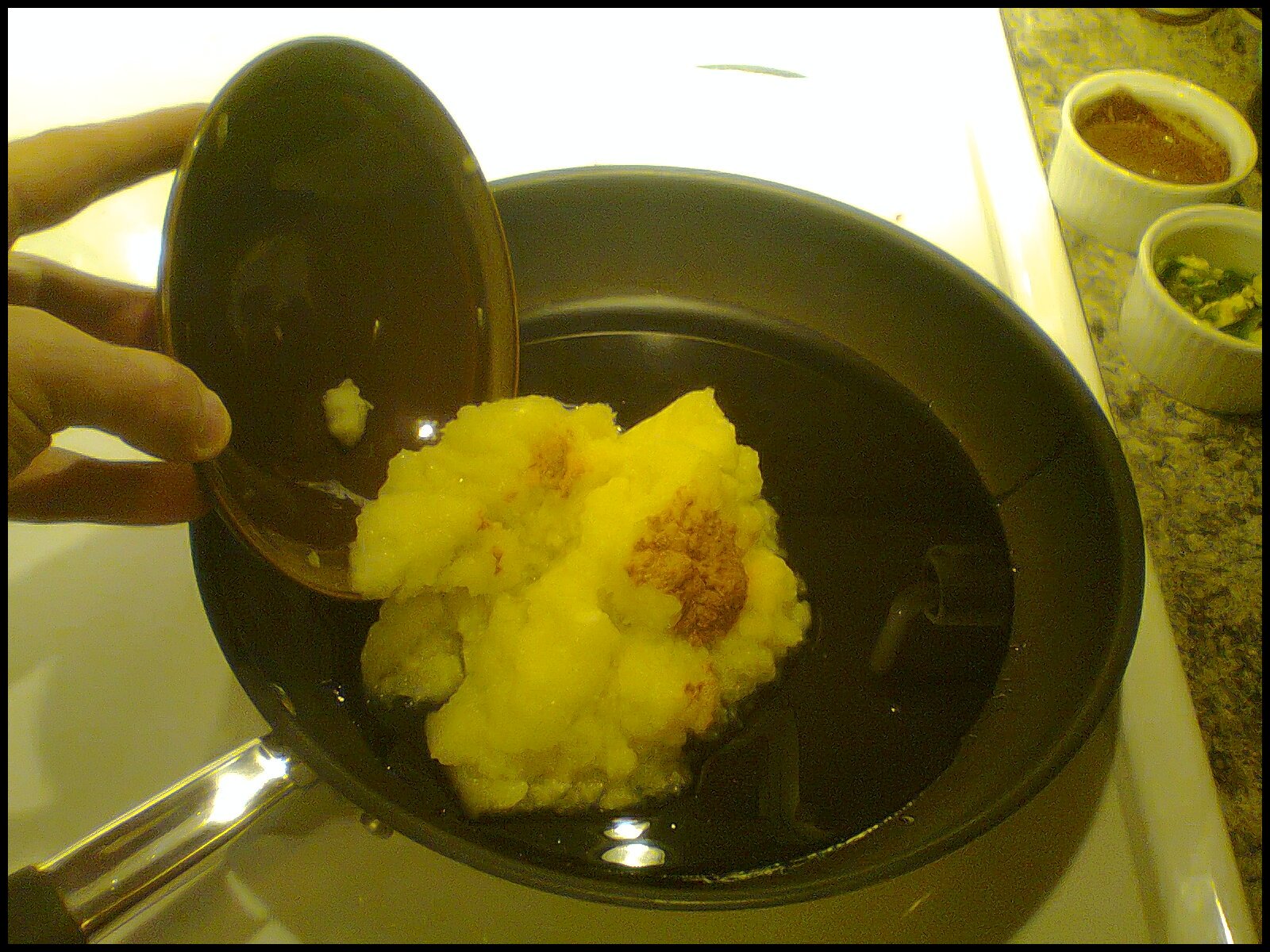
When the oil is hot, keeping your eyes away, add the garlic, ginger and onion paste with turmeric. Be careful -- it is likely to spatter.
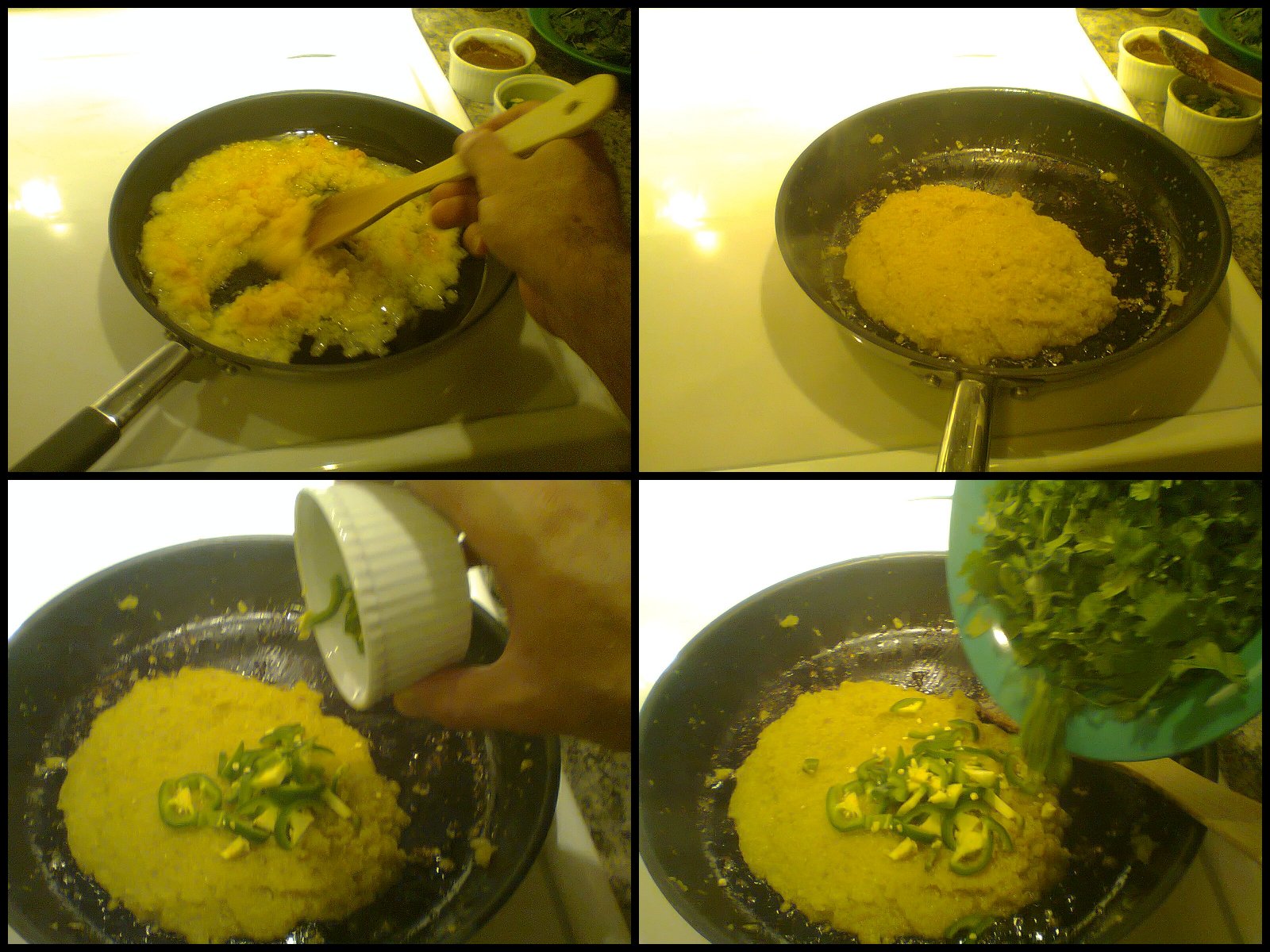
Fry the paste while stirring. It will slowly start to turn tan, and then brown. Just keep stirring. After it begins to brown, add the chopped green chiles, and then the cilantro.
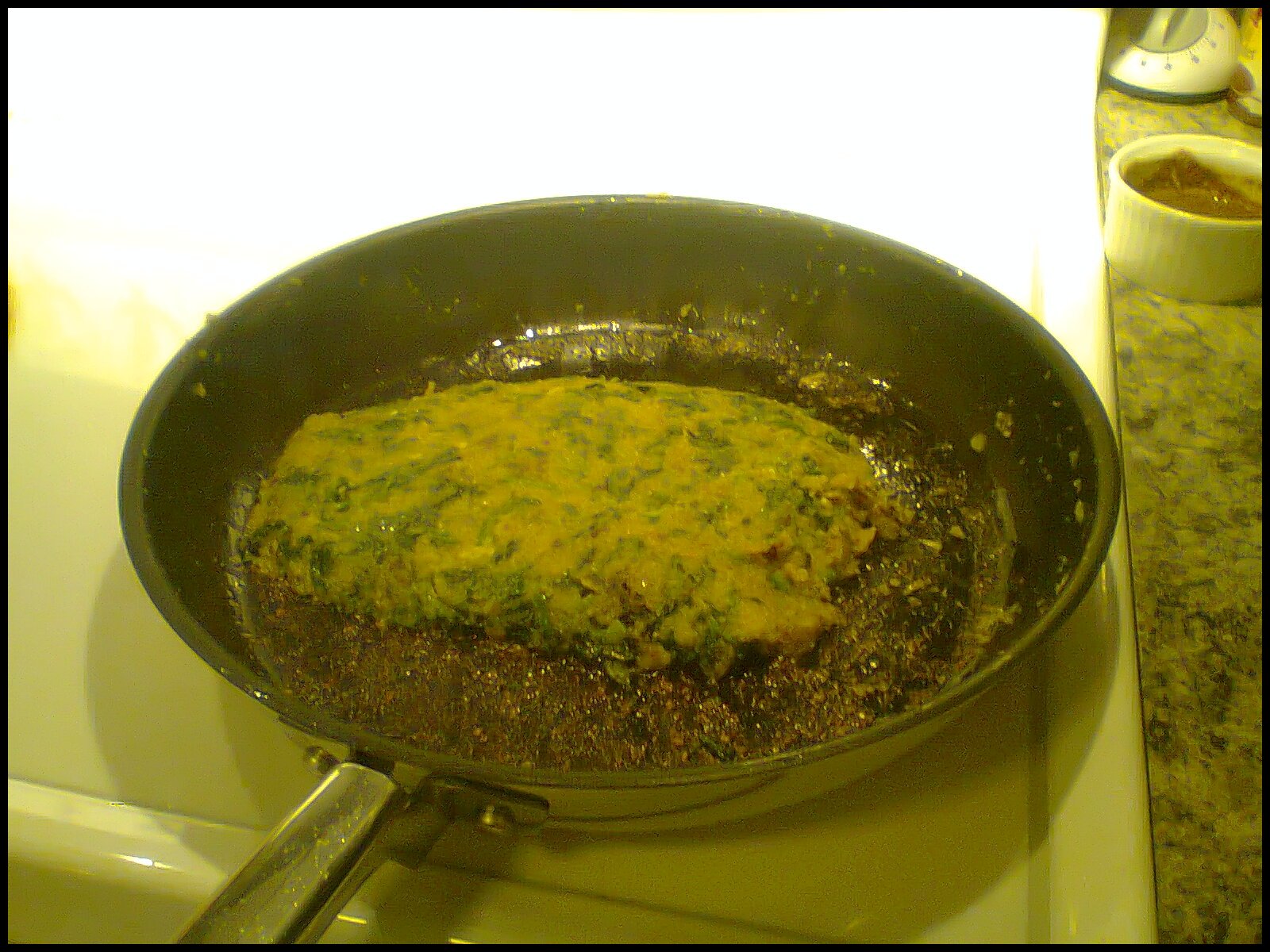
Stir to mix thoroughly while continuing to brown the paste.
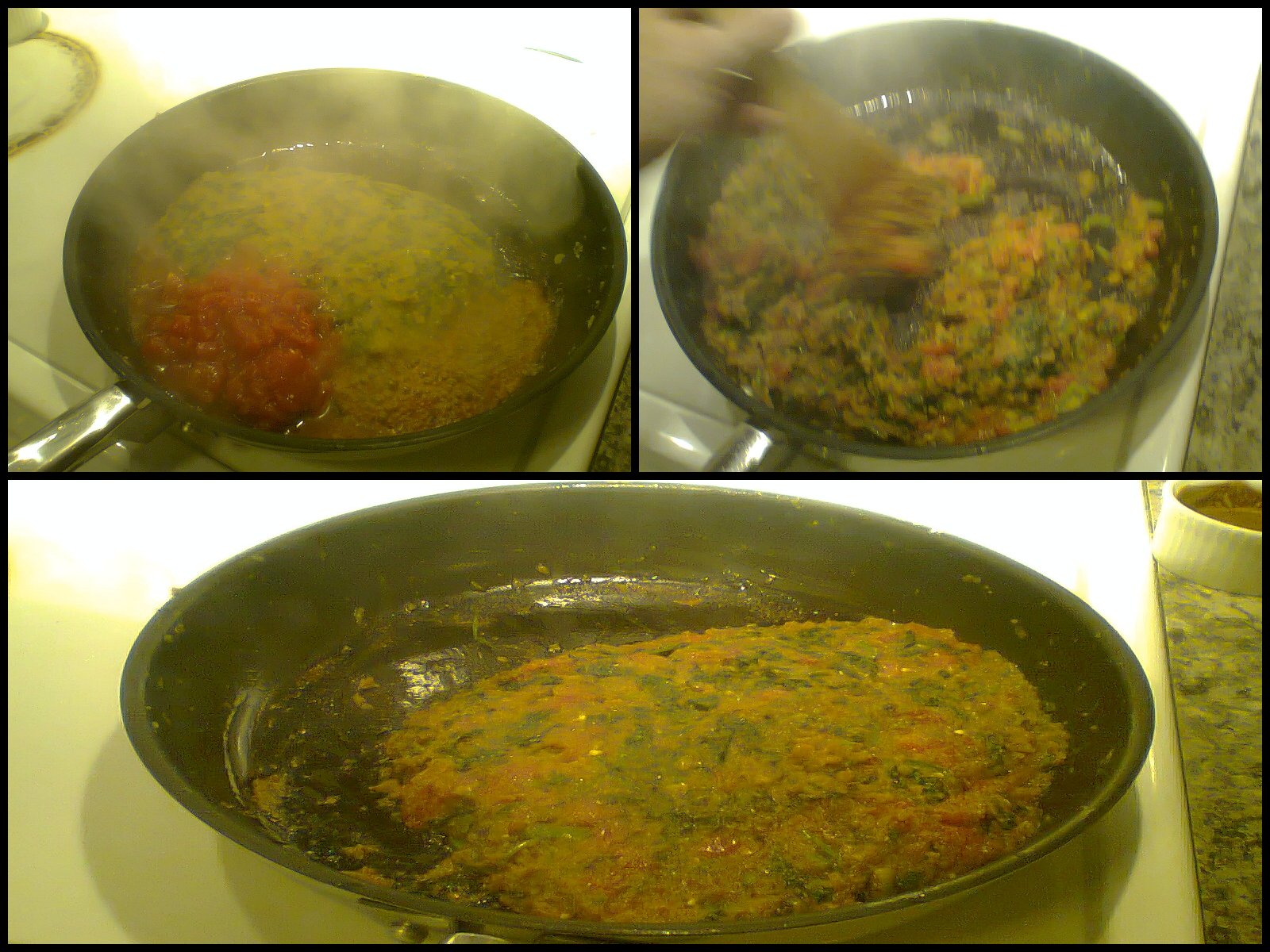
Add the tomatoes with their juice. Mix. Take the opportunity afforded you by the addition of the tomato juice to scrape up as much of the browned bits as you can and incorporate them into the mixture.
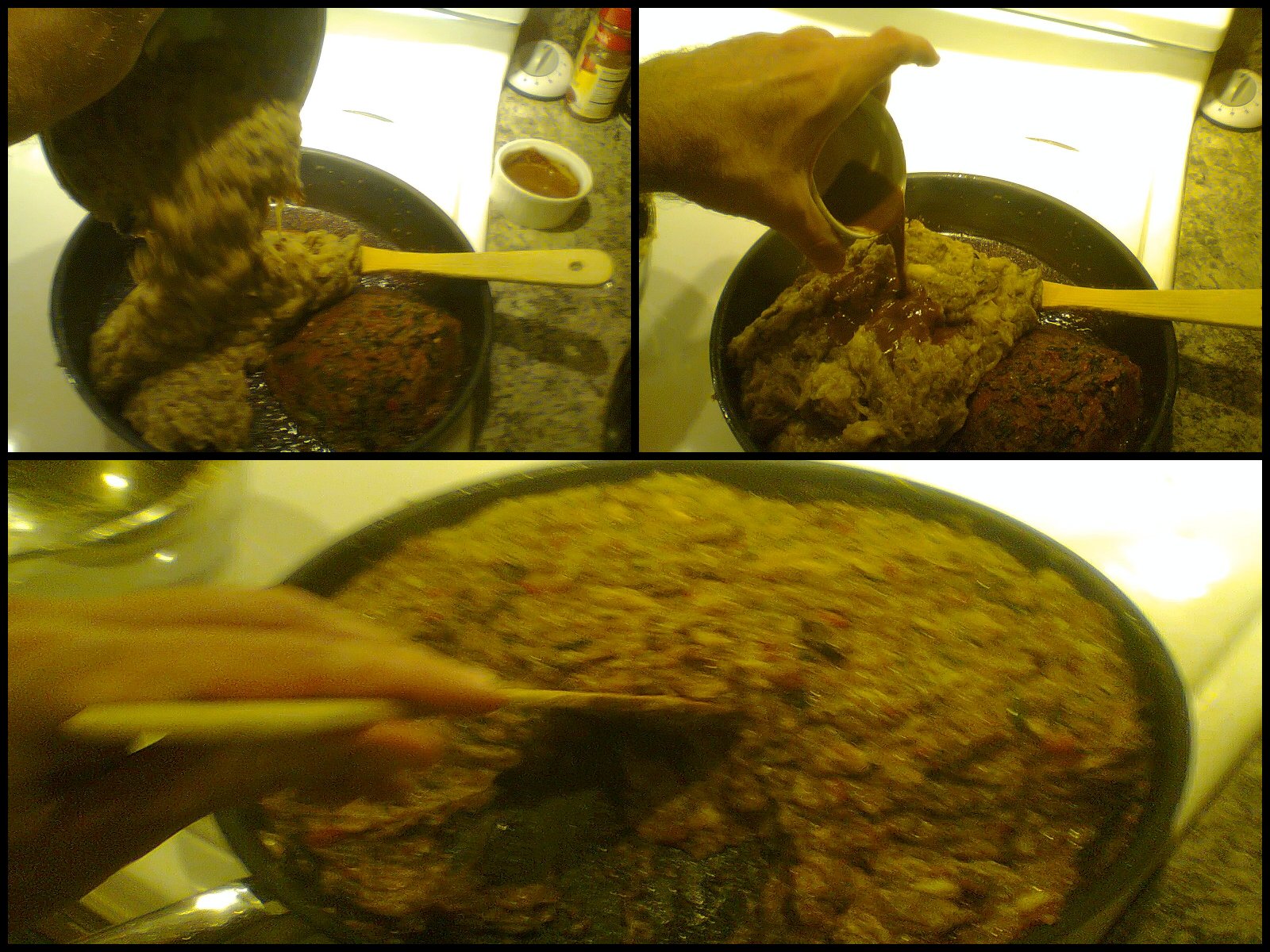
Add the eggplant pulp, and then the lemon juice and spice mixture. Mix everything together.
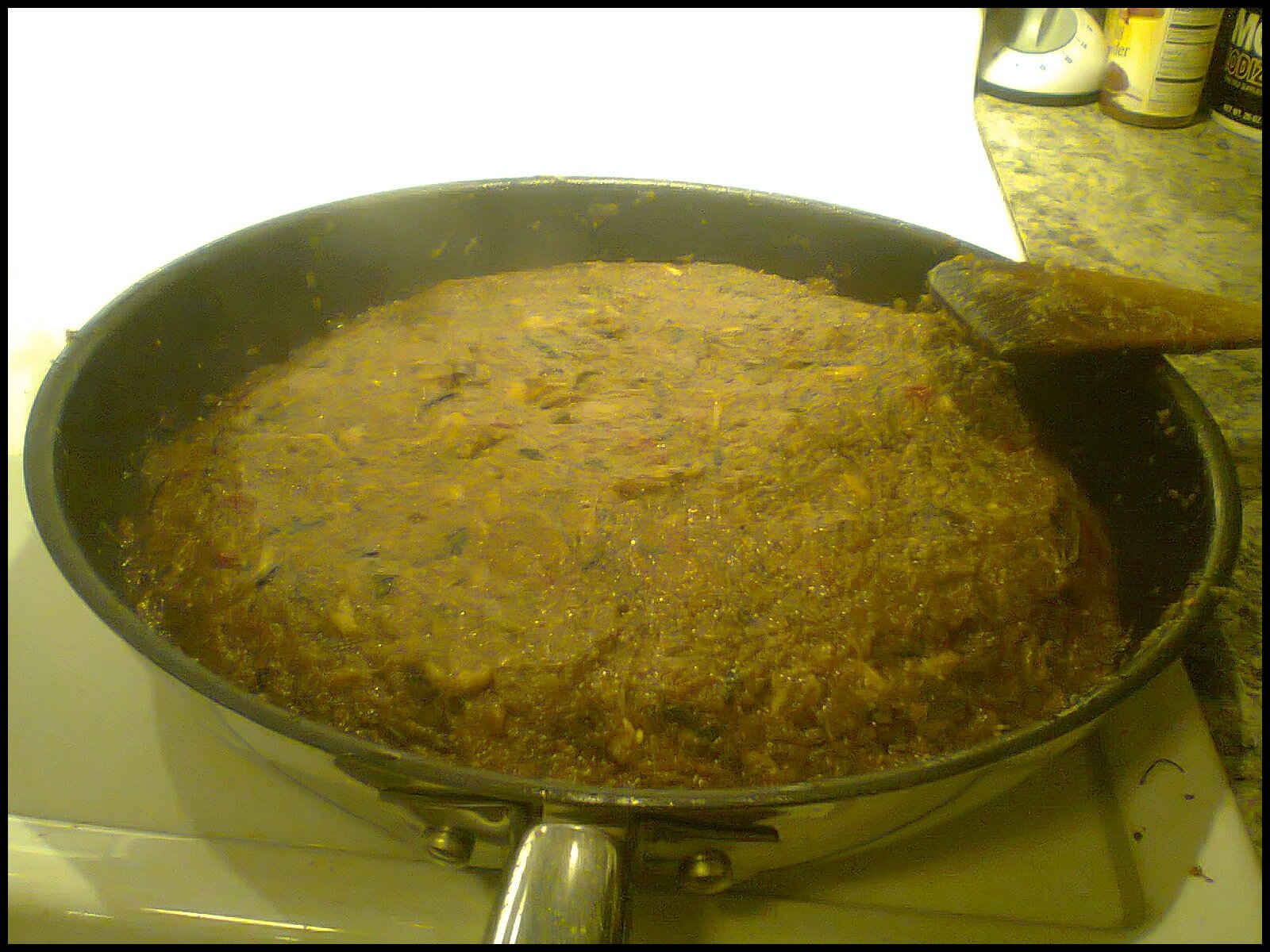
When you have cooked everything through, it is good to eat. (You knew this already, because like any good cook, you were tasting as you went along...) However, I find that this and many other such spicy vegetable dishes are improved by a night in the fridge during which the flavors can have a chance to blend. Serve hot over rice, or with flat bread, or both. Share and enjoy.
This slide show brought to you by the cellphone camera of
Brian R. Gaeke